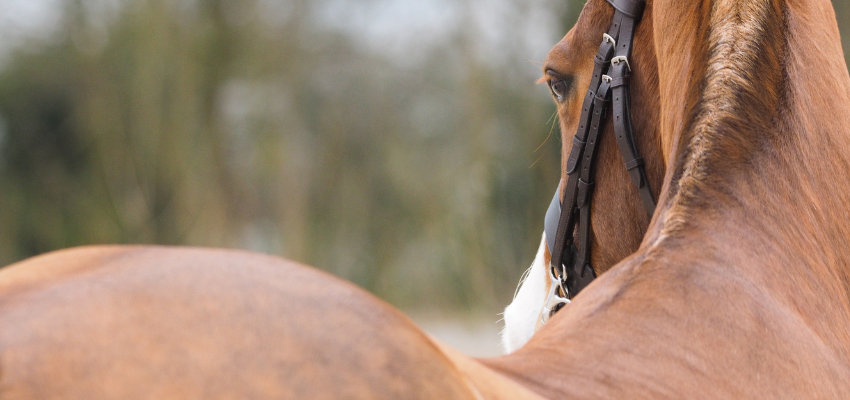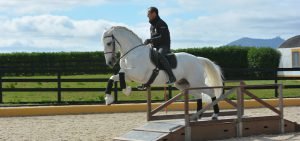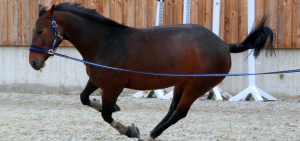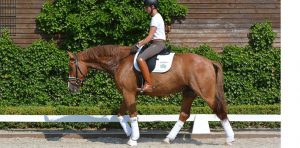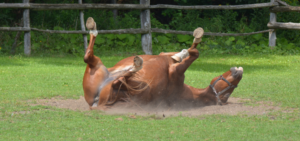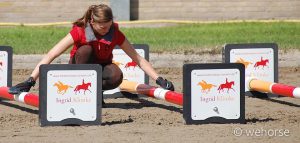Kissing Spine is one of the most frequently diagnosed back diseases in horses and can be very painful. But what exactly is Kissing Spine in horses? This article will inform you about the causes, symptoms, treatment, and prevention of this disease.
What Exactly Is Kissing Spine in Horses?
Kissing Spines refers to a frequently diagnosed spinal disease in horses. In this condition, the spinous processes of the vertebrae increasingly approach each other until they touch, rub against each other, or even overlap. This can lead to severe pain, inflammation, bony outgrowths, or cysts.
Anatomical Basics of the Back
The horse’s back consists of 18 thoracic and 6 lumbar vertebrae. Each of these vertebrae has an upwardly formed spinous process. There is a small gap between the spinous processes. The spinous processes in the front part of the spine are slightly angled backwards, while those in the rear part are slightly angled forwards. The change of direction occurs at the level of the 14th to 16th thoracic vertebrae, which are located precisely under us riders.
Besides the vertebrae, ligaments and muscles provide stability. The most well-known ligament is the so-called neck-back ligament. It extends from the neck to the sacrum and lies on the spinous processes.
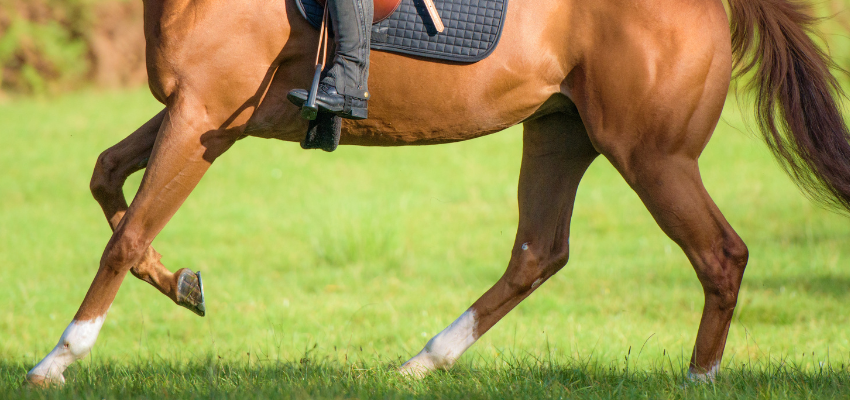
Causes of Kissing Spines in Horses
To healthily bear your weight, a horse needs to arch its back and engage its back muscles effectively. If the back muscles are not strong enough or are tense, your horse cannot properly engage these muscles. This leads to the horse not being able to actively step under the center of gravity with its hindquarters and pushing its back downwards. This misalignment leads to the spinous processes approaching each other. Persistent misalignment can even cause the muscles to diminish over time. The following causes can lead to such misalignment and promote Kissing Spines in horses:
- Incorrect riding and training
- Overload due to lack of muscles, especially in young years
- Muscle tension
- Misalignment
- Use of an ill-fitting saddle
- Swayback
- Ligament damage
How to Recognize Kissing Spines in Horses?
Kissing Spines can manifest through a variety of signs and symptoms:
- Sensitivity when palpating or grooming the back
- Lameness
- Stiffness
- Muscle atrophy
- Hesitant transitions
- Inactive hindquarters
- Resistance in moving backwards
- Problems in collection
- Refusal to arch the back
- Refusal before a jump
- Inability to stretch forward and down
- Riding issues
- Irregular gait
- Frequent changes to cross canter
- Bolting under the saddle
- Defensive behavior such as bucking or rearing
- Saddle or girth pressure
How Can Kissing Spines in Horses Be Diagnosed?
Kissing Spines in horses can be diagnosed as follows:
- Examination: To draw initial conclusions, the veterinarian first examines the horse’s back for irregularities in the coat, traces of saddle pressure, scars, and musculature.
- X-rays: Your veterinarian can determine if your horse suffers from Kissing Spines using X-rays. X-rays can reveal changes in the spinous processes and determine the stage of the disease.
- Scintigraphy: X-rays may not always reveal the full extent of the disease. In such cases, scintigraphy, a nuclear medicine examination, can be useful as it provides more precise results. Changes not visible on X-rays can be detected early with scintigraphy.
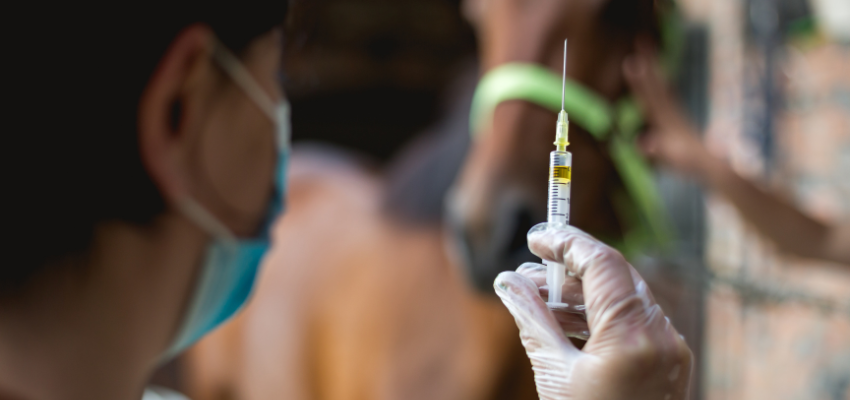
Treatment of Kissing Spines in Horses
In a horse with Kissing Spines, it is initially important to relieve the pain. You can administer anti-inflammatory and pain-relieving medications for this. If that is not sufficient, you can treat the Kissing Spines locally by injecting anti-inflammatory and pain-relieving medications between or around the spinous processes. Once your horse is free of pain, you can start training and building abdominal and back muscles. This is best done from the ground in the form of lunging, in-hand work, and pole work. Discover here numerous ground work exercises, explained step by step, and let yourself be inspired by our trainers.
Properly trimmed hooves, suitable shoeing, and a fitting saddle are also important to avoid back problems. Osteopathic treatments can help release blockages.
Can I Ride a Horse with Kissing Spines?
Yes, a horse with Kissing Spines is often rideable. Movement is very important for a horse with this condition to prevent progression. However, it is advisable to work from the ground and on the lunge until your horse has built enough muscle to arch its back and healthily carry your riding weight.
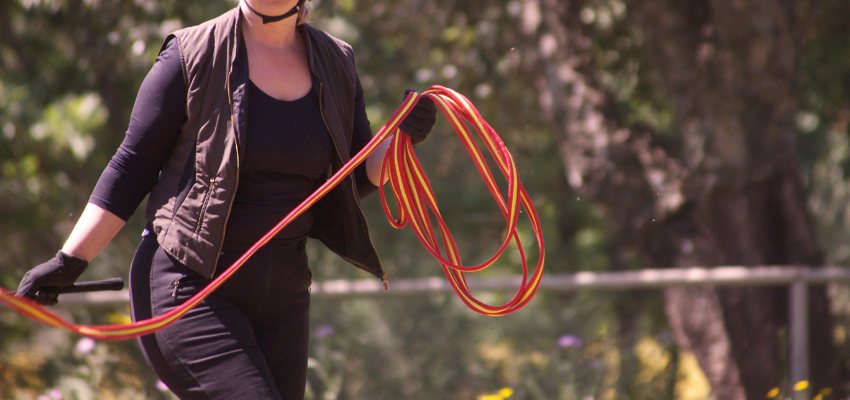
How Can You Prevent Kissing Spine in Horses?
Correct riding and ground work over the back, a well-fitting saddle, and correctly trimmed hooves are important to prevent Kissing Spines in horses.
Our Conclusion
Kissing Spines can be very painful for your horse. However, with proper treatment and suitable training, you can enable it to live a life as pain-free as possible.

